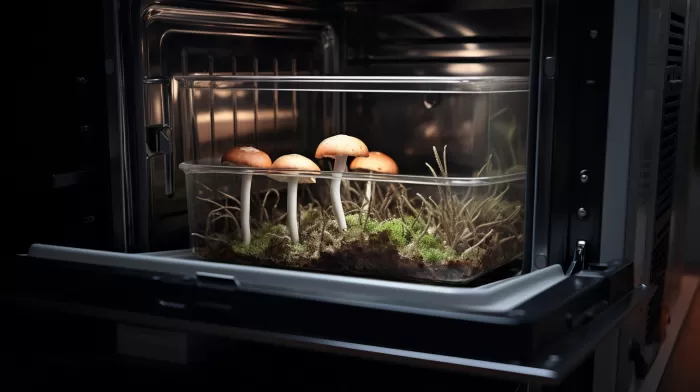Picture this: you’re filling your dishwasher with dirty dishes, unaware that there’s an unwelcome guest lurking inside. This potentially harmful fungus thrives in the hot, damp environment of your dishwasher and now, researchers at Oxford have discovered that it can even withstand the extreme conditions present in this common household appliance.
In a study published in the British Mycological Society journal Fungal Biology, the researchers investigated the presence of fungi in dishwashers from 101 cities across six continents. They were shocked to find that 62% of the dishwashers studied had fungi growing in the rubber seals around the door. Even more alarming, more than half of those fungi were black yeasts.
The Dangers of Black Yeasts
Black yeasts are a type of fungus that are often associated with human diseases. One black yeast found in this study, Exophiala Dermatitidis, can potentially cause severe infections that can even be fatal in some cases. The fact that these fungi can survive and thrive in such an extreme environment like the inside of a dishwasher is a cause for concern and could pose a significant health risk in the future.
How Do These Fungi Survive in Dishwashers?
You might be wondering how these organisms manage to survive the extreme conditions inside a dishwasher. The answer lies in their ability to adapt to high temperatures, dampness, and even the chemicals found in dishwasher detergents. These fungi form a protective layer that shields them from the harsh conditions. This ability to adapt makes it challenging to remove them completely from the dishwasher environment, even with regular cleaning and maintenance.
What Can You Do to Protect Yourself?
While the findings of this study may be alarming, there are steps you can take to reduce the risk of these harmful fungi invading your home:
- Inspect your dishwasher regularly– Check the rubber seals and other areas around the dishwasher door for signs of fungi or mold growth. If you notice any, remove it immediately.
-
Clean your dishwasher thoroughly and consistently– Regular cleaning is essential to keep your dishwasher free of fungi. Use dedicated dishwasher cleaning products or a mix of vinegar and baking soda to clean the interior of the machine. Don’t forget to clean the rubber seals and crevices where fungi can thrive.
-
Allow ventilation– After each dishwasher cycle, leave the door slightly open to allow for proper ventilation and to prevent the buildup of moisture.
-
Replace damaged parts– If your dishwasher has any damaged parts, like cracked or deteriorated rubber seals, replace them promptly to avoid creating a breeding ground for fungi.
-
Use high-quality dishwasher detergents– Good detergents can help keep fungi at bay by effectively removing food residue and reducing the likelihood of a suitable environment for fungi to develop. Check out this list of top-rated dishwasher detergents from Good Housekeeping for some recommendations.
Should You Be Worried?
It’s essential to remember that not all fungi are harmful; many are harmless or even beneficial. In this study, the researchers found that the potentially harmful fungi were only present in a little over half of the dishwashers examined. While it’s important to be aware of the risks and take the necessary precautions, there’s no need to panic.
The researchers concluded that the growing presence of these fungi could become a significant health risk in the future, especially as they continue to adapt to extreme environments like dishwasher interiors. By maintaining good habits, regularly cleaning your dishwasher, and taking other preventive measures, you can minimize the risk of these fungi invading your home.



